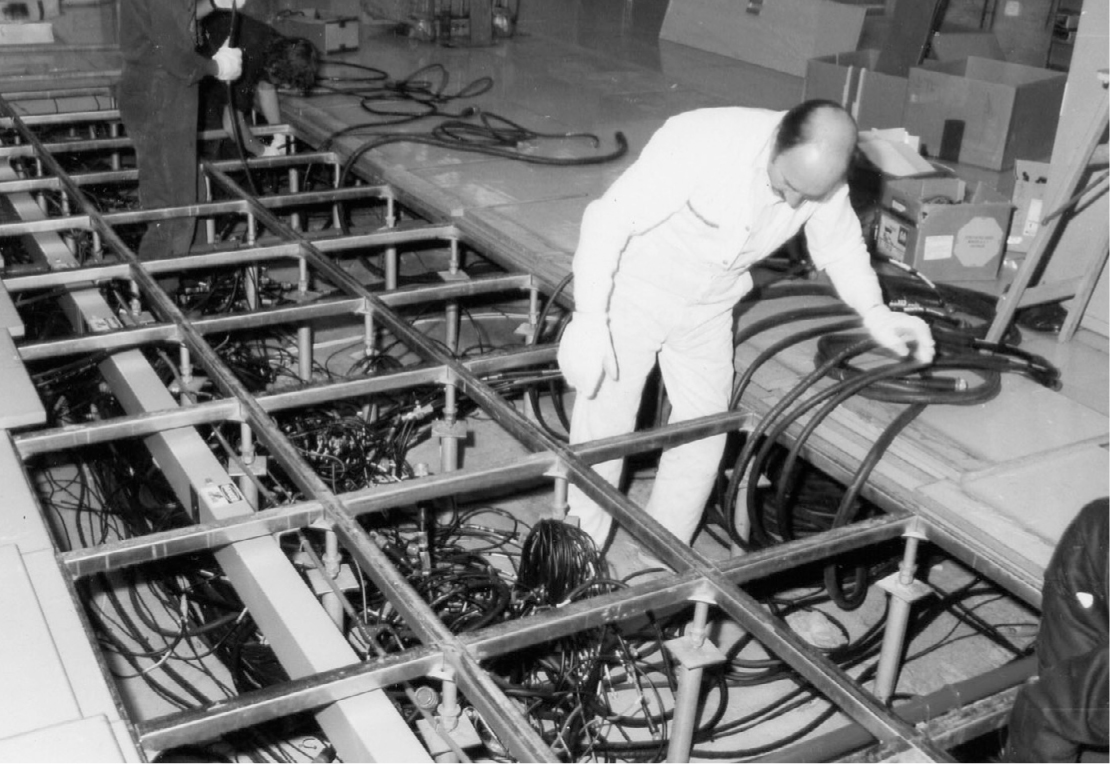I left Honeysuckle Creek in 1974. The station was still tracking other spacecraft — including the three Skylab missions. As I left, the team were preparing to track the joint United States/Soviet mission called Apollo-Soyuz.
An Apollo spacecraft flew for the last time in 1975, carrying out a rendezvous and docking with a Soviet Soyuz spacecraft. The Cold War rivalry between the United States and the Soviet Union spurred on the Space Race. This was a symbolic joining, which marked the beginning of a new era in cooperation that saw Russia eventually taking US (and other) astronauts to the International Space Station.
Although Honeysuckle Creek continued to track other unmanned spacecraft missions, the station was now really an annex to Tidbinbilla — whereas before that, Tidbinbilla had supported Honeysuckle Creek.
A huge new 70-metre antenna was now operating at Tidbinbilla. It was too expensive to keep the Honeysuckle Creek Tracking Station running with its remote, and smaller antenna.
November 1981 saw the last shift at the Honeysuckle Creek Tracking Station — the station that had given the world the very first pictures of a man on the Moon. The team steered the antenna to its upright ‘stow’ position, powered down the receivers, transmitters and servo-systems, turned out the lights and drove their cars down the narrow mountain road for the last time.

Len Litherland removing the last of the cables out of the floor when the station was finally pulled down in December 1981.
HAMISH LINDSAY
NASA offered the site to the Australian government. The antenna and most other equipment went to Tidbinbilla; the computers were sent to the Orroral Valley Tracking Station; some equipment was sold off; and the priceless records of personnel, shift rosters and other history were sent to a Canberra rubbish dump.
The buildings were left unattended, empty shells rotting among the trees. They were soon completely vandalised — walls and windows smashed, even the taps ripped off. No government department or university took up NASA’s offer — and soon the buildings were beyond recovery.
Finally the rotting frames were bulldozed. Only the bitumen carpark, the concrete foundations and a few rusting bolts remained.
In 2000, National Parks and Wildlife erected plaques on the site. They show photographs of some of the original staff from a long past era. These small plaques tell just a minuscule part of a story that was, for a very brief period of time, a place of high drama, extreme significance and great national pride. Honeysuckle Creek Tracking Station was the first and only place on Earth to receive pictures of the first human steps on the Moon and show them ‘live’ to the world.
The cancellation of the Apollo program virtually brought to an end the era of the ‘technician’ — the multi-skilled ‘fixer’ at the heart of the Apollo missions.
Neil Armstrong had flown the lunar module by hand, not with microchips, and engineers had constructed the Eagle with screwdrivers and soldering irons. However the Apollo program initiated the information age, as people around the world watched the lunar landing on their TV sets as it happened — in ‘real time’.